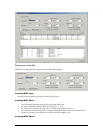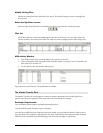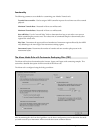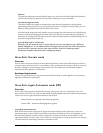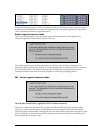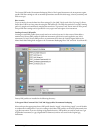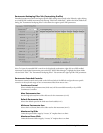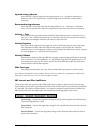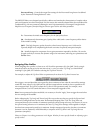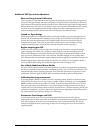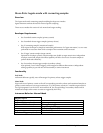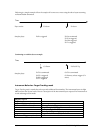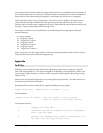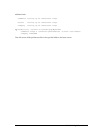
TASCAM GigaEditor 4 Manual 205
Additional PRF Tips and Considerations
Short and Long Interval Calibration
If you are going to create both short and long interval settings, be aware that when a long interval
is played it rst goes through the short interval lter settings and then morphs between short and
long settings as the transposed sample exceeds the short interval and approaches the long interval.
Because the lters react in this way it is best to create your long interval immediately aer creating
the short interval by emphasizing the already existing short interval settings, this gives a more
natural sounding transition between the short and long interval coecient values.
Fretted vs. Open Strings
When applying lters to stringed instruments and string ensembles, open string samples do not
bend as well as fretted notes since bending an open string on an instrument is not oen done. In
general, the looser the performance of the original sample, the more successful the ltered
transposition becomes. is is due in part because all the players of the ensemble are being
transposed simultaneously, instead of with a natural time/pitch variance per player.
Region mapping plus PRF
Another issue to consider is when samples have already been stretched or transposed through
region mapping. e further you transpose a sample using the instrument mapping, the less
eective the ltering process becomes. Ideally you would want an independent sample for each
note region of an instrument. If this is not an option, nd PRF settings for every sample that is
NOT transposed by the instruments region mapping and then apply those same lter settings to all
keyboard regions that contain that sample. For instance, if a sample of C4 is mapped to both C4
and C#4, nd the PRF settings for C4 and then apply those same settings to C#4.
Use of Body Models and Room Models
Of course the use of body models contributes greatly to the realism of programmatic portamento,
but the use of modeled rooms also helps. Attempting to bend a note as well as the resonance of the
instruments body and the frequency spectrum of the room the instrument was played in is quite
problematic. Solution: apply the PRF to DRY instruments and add a room model post lter…
Calibrating Decaying Instruments
A decaying sound is harder to calibrate for than a sustaining sound. When the transient sounds
dierent from the decay of a note (eg, Guitars, possibly Timpani, GuZheng), use your expression
pedal to audition just the decay portion of a sound. Long decays like guitars allow you to strike a
note, gliss to the target note, then fade in, cross referencing the transposed and non-transposed
samples until you've matched not their transients, but their decay. Constant sustaining sounds, like
a steady mf on trombone, would not require this approach but it might help minimize distractions
due to hearing dierent transients during cross-referencing.
Portamento Time Ranges and Trills
A clarinettist may lip up to a note at the slowest speed that the mono rule oers, almost
imperceptibly slow. On the other hand, at the fastest rate the glissando is practically instantaneous.
Start with a setting of 20-30 for most instruments that can do quick bends/slides. e clarinet
example would benet from a speed range of about 25-70. Settings lower than 10 are useful for
performing trills!



